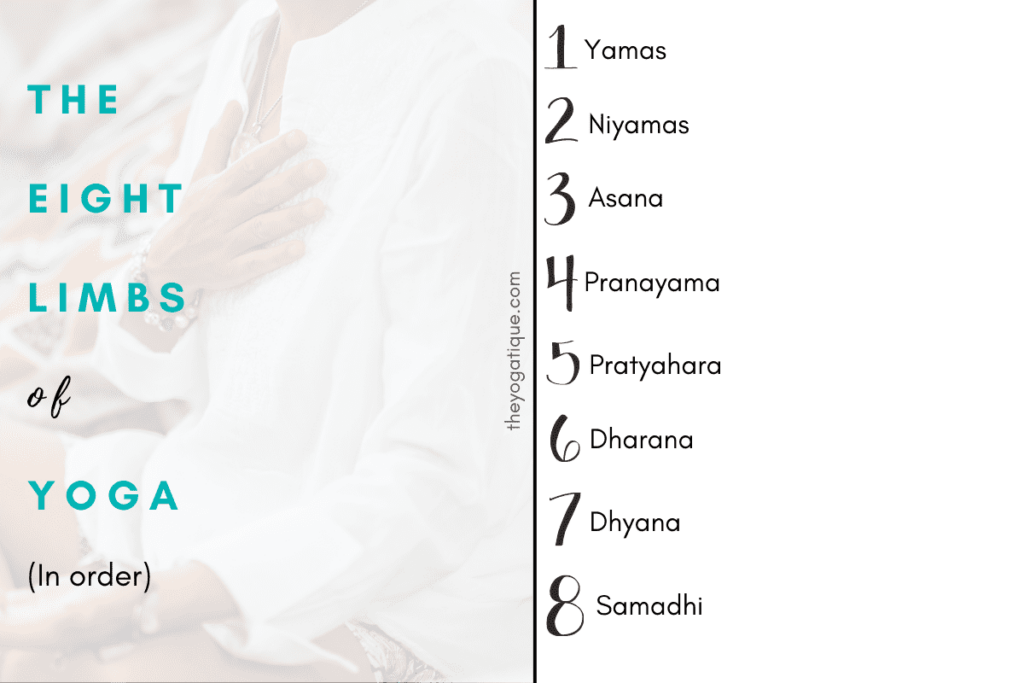When delving into yoga philosophy, one of the first names you’ll likely encounter is Patanjali. But precisely, who was Patanjali, and how did his ancient wisdom shape yoga as we know it today?
The sutras, the eight limbs of yoga, the yamas and niyamas – these all originate from this mystic sage.
In this article, we're exploring the myths and ideologies around the philosopher and author named Patanjali. We look at his impact on yoga philosophy and how his teachings still exist in modern-day asana classes.
Article content:
(Click any link below to jump directly to section)

THE YOGA TEACHER TRAINING
YOU'VE BEEN LOOKING FOR.
Online Yoga Teacher Training Offers
- Affordability
- Flexibility
- Certification
- Lifetime access
⬇Click below to discover the best Yoga Alliance registered online yoga certifications enrolling now⬇
What we know about Patanjali
Patanjali, also known as Gonardiya or Gonikaputra, was an Indian sage, mystic, and philosopher from the Vedic period.
According to British Scholar Monier Monier-Williams, “Patañjali” is a compound name. It comprises “patta,” meaning falling/flying in Sanskrit, and “añjali,” meaning folded hands.
Many scholars who have analyzed Patanajli's works estimate that Patanjali lived between the second century BCE and the fourth century CE.
Patanjali learned yoga alongside seven other disciples from the yogic guru Nandhi Deva. He later attained Samadhi (enlightenment) through meditation at the Brahmapureeswarar Temple in Tamil Nadu, India. Today, a shrine dedicated to Patanjali still exists there.
Many people theorize that he was entirely mythical.
Patanjali's identity and background
There are many myths in the Hindu tradition around Patanjali's birth. One is that he fell from heaven as a serpent into the hands of the powerful yogini Gonika, who was meditating.
The legend goes that he transformed into a human form within a few moments, and Gonika accepted him as her son.
Patanjali is most commonly depicted as half-man, half-snake. He is believed to be the incarnation of the thousand-headed serpent-king named Shesha or Ananta.
Aside from the legends around Patanjali, he is most known as the author of the ancient yogic scripture, the yoga sutras. By translating Patanjali's yoga sutra teachings, scholars have uncovered a great deal about classical yoga.
Interestingly, a man named Patanjali was also credited with two other non-yogic texts. One was about Sanskrit grammar (Mahabhashya), and the other was about medicine (Charakapratisanskrita). However, it is unknown if it is the same Patanjali who wrote these books and the sutras.
What was Patanjali’s role in modern yoga?
Patanjali's role in modern yoga is foundational and transformative, as he is credited with compiling the Yoga Sutras, a collection of 196 aphorisms that systematically outline the philosophy and practice of yoga.
These ancient texts, believed to have been written around 400 CE, provide a comprehensive guide to the eight limbs of yoga, encompassing ethical disciplines, physical postures, breath control, sensory withdrawal, concentration, meditation, and ultimately, enlightenment.
Patanjali's Yoga Sutras serve as a crucial framework for modern yoga, influencing both the spiritual and practical aspects of the practice.
His work has allowed yoga to evolve into a holistic discipline that integrates mind, body, and spirit, making it accessible and relevant to contemporary practitioners worldwide.
Although they are of Hindu tradition, the Yoga Sutras are not tied to any particular religious or cultural context, making them adaptable to yogis worldwide.
While the eight limbs of yoga were originally taught as a path to self-realization, the timeless teachings now serve as a modernized holistic approach to well-being.
Patanjali's impact on yoga culture and philosophy
Patanjali's yoga sutras delve into the nature of the mind, the causes of suffering, and the path to liberation. The yoga sutras include concepts such as:
- The fluctuations of the mind (Vrittis)
- The nature of the self (Purusha)
- The role of detachment in achieving spiritual goals
These philosophical insights have become the foundation of yoga culture. Yoga schools continue to teach them in their trainings and classes. Moreover, they are commonly integrated into mindfulness practices and holistic therapies.
⬇Yoga Alliance registered yoga teacher trainings you should look into⬇
Why is Patanjali called the father of modern yoga?
Patanjali is known as the founding father of modern yoga because he was the first Yogi to record his teachings in writing via the yoga sutras scriptures.
Patanjali is often called the father of modern yoga because his compilation of the Yoga Sutras laid the foundational framework for the systematic practice and philosophy of yoga as we know it today.
The Yoga Sutras distill the essence of earlier yoga traditions and provide a comprehensive guide to mastering the mind, body, and spirit.
His work profoundly influenced the development and dissemination of yoga practice worldwide. It was pivotal in transforming yoga from a loosely defined spiritual practice into a structured and universally respected discipline, earning him the title of the father of modern yoga.
Highlights of Patanjali’s teachings
The most commonly taught philosophical concept from Patanjali's yoga sutras is the eight limbs of yoga. Here is a brief overview of this core teaching, which is also known as the Ashtanga yoga eightfold path:
- Yamas – Moral codes detailing how we should act in the world and how we should treat others.
- Niyamas – Personal observances of how we should behave towards ourselves.
- Asana – The physical postures we practice, including the seated position used in meditation.
- Pranayama – Techniques for breath control used to regulate the flow of prana (life force).
- Pratyahara – Withdrawing from your senses and the exterior world and turning inwards.
- Dharana – Single-focused concentration to facilitate a meditative state.
- Dhyana – The state of meditation which occurs from an uninterrupted flow of concentration.
- Samadhi – Enlightenment or bliss, where you have attained the highest levels of consciousness.

Patanjali's enduring legacy
Patanjali's yoga sutras teachings were one of the most significant contributions to yoga, creating a lasting legacy. The sutras consist of 196 short statements detailing the philosophy and practice of classical yoga.
These teachings not only show Patanjali's high understanding of human nature, but they also provide a systematic and organized approach to yoga for the first time in history.
Practical application in modern yoga
Due to the evolution of this practice, the teachings of Patanjali are becoming less prominent in modern-day yoga. One reason for this is that our intention for practicing yoga has changed.
The purpose of Patanjali's yoga was enlightenment. Ancient yogis would practice yoga to release their past karmas and become liberated.
But today, most yogis come to their mat to gain a sense of mental peace in their lives. Rather than a path to enlightenment, we now see yoga as a mindfulness tool.
Even so, one part of Patanjali's teaching that remains apparent in modern-day practice is the Yamas and Niyamas.
This is not only a fundamental teaching in all yoga teacher training courses. The ancient wisdom is just as relevant today as it was all those years ago.
By applying these teachings on and off the mat, contemporary yoga practice continues to help raise human consciousness.
Takeaway on Patanjali
While we may know little about who was Patanjali, what we can be clear on is the significance of his teachings in modern yoga practice.
Yoga schools worldwide transmute his timeless wisdom through teaching about the eight limbs of yoga. So, while the way we practice yoga keeps evolving, there is great hope that the insights of sages like Patanaji will continue to live on. Curious to learn more about the ancient sage's of yoga? Check out our article about Swami Vivekananda.
Some online yoga studios, online yoga teacher training programs, and brands that we write about may offer us a small commission should you decide to make a purchase or signup after reading our content. Thank you for enabling us to exist!












